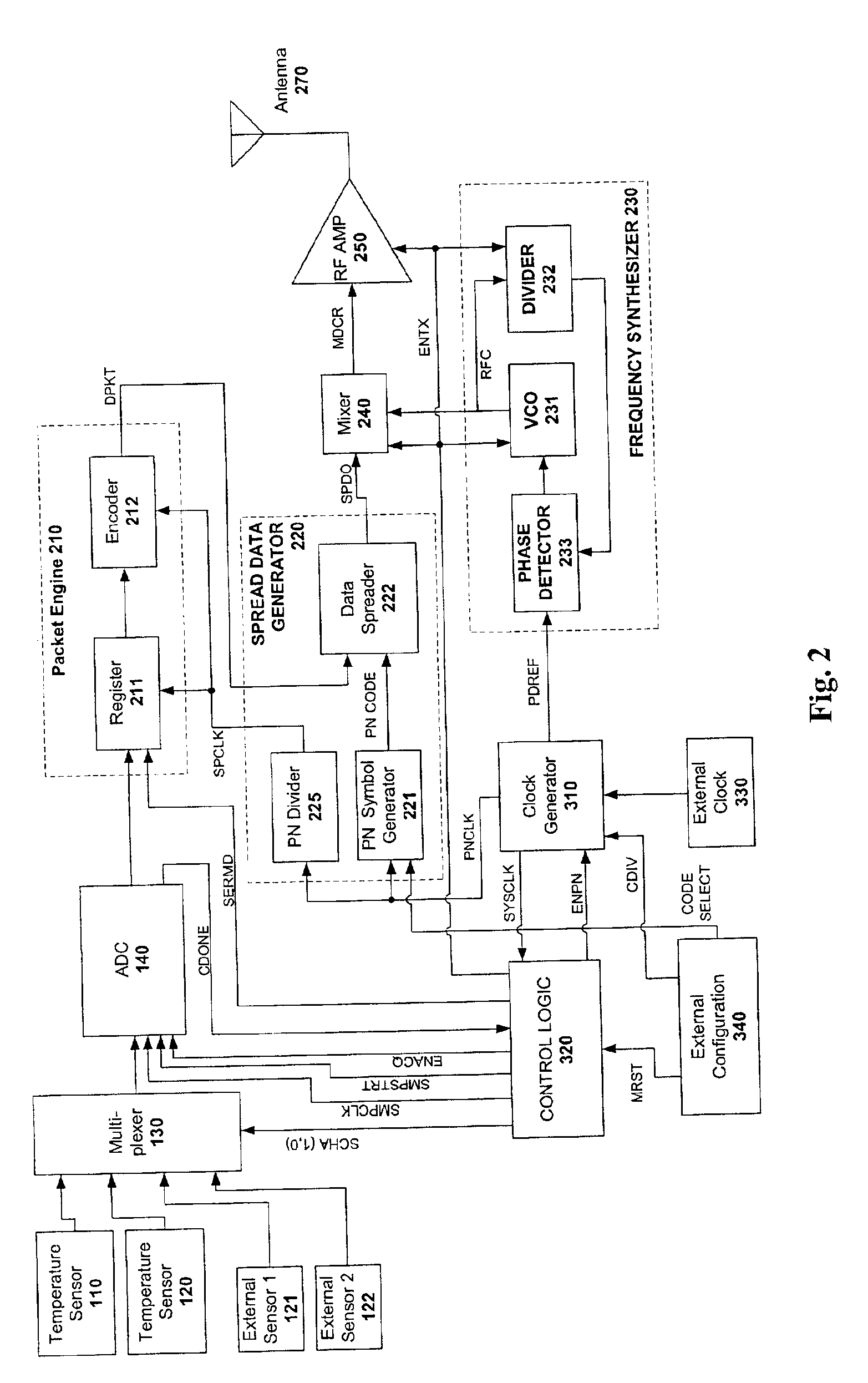Wireless spread-spectrum telesensor chip with synchronous digital architecture
a telesensor and digital architecture technology, applied in the field of data transmission, can solve the problems of not being able to address the subject areas of instant applications, not being able to provide a fully synchronous rf transmitting architecture capable of being manufactured as a single-chip device, and not having a specific bearing on instant applications, etc., to achieve low-power designs, fewer and simpler operations, and the effect of low cost of sensor telemetry devices
- Summary
- Abstract
- Description
- Claims
- Application Information
AI Technical Summary
Benefits of technology
Problems solved by technology
Method used
Image
Examples
Embodiment Construction
FIG. 1 represents the basic signal-flow block diagram of an exemplary application-specific integrated circuit (ASIC). (In describing the core components of the telemetry device, certain routine operations such as the amplification of signals, the provision of power, and the conditioning and / or filtering of signals, for example, which are well known to those of skill in the art, will not be explicitly described.)
A typical telemetry ASIC according to the invention maybe a temperature sensor for a particular device, the temperature of which is monitored at a remote location. The temperature data must be collected and encoded into a format usable by the receiver to which the data will be sent. The encoded data stream is then mixed (modulated) with spread-spectrum chipping data and superimposed onto an RF carrier wave for actual transmission.
The telemetry ASIC or other telemetry device is monolithic, that is, contained all on a single base or substrate such as a silicon chip. In large vo...
PUM
 Login to View More
Login to View More Abstract
Description
Claims
Application Information
 Login to View More
Login to View More - R&D
- Intellectual Property
- Life Sciences
- Materials
- Tech Scout
- Unparalleled Data Quality
- Higher Quality Content
- 60% Fewer Hallucinations
Browse by: Latest US Patents, China's latest patents, Technical Efficacy Thesaurus, Application Domain, Technology Topic, Popular Technical Reports.
© 2025 PatSnap. All rights reserved.Legal|Privacy policy|Modern Slavery Act Transparency Statement|Sitemap|About US| Contact US: help@patsnap.com



